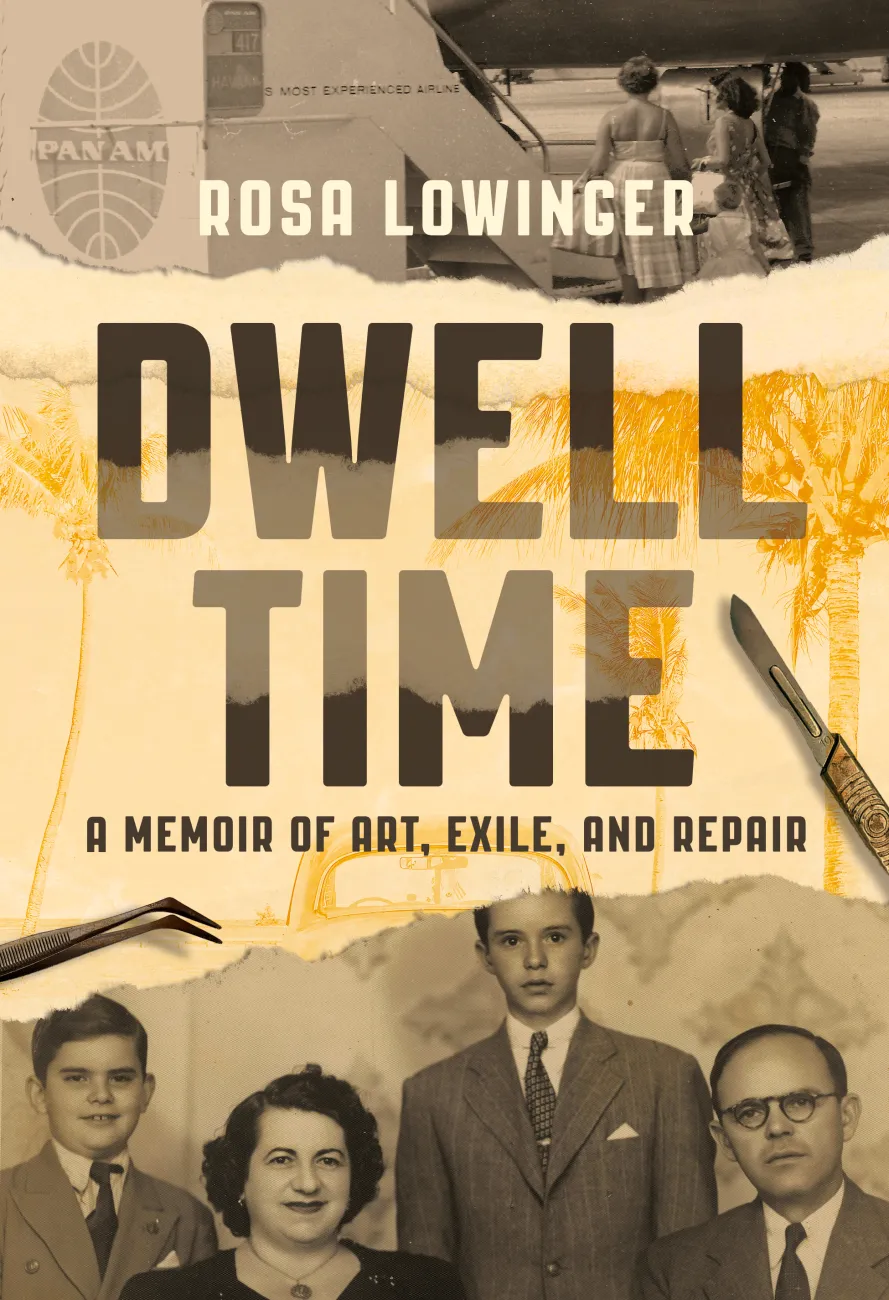Book Review: "Dwell Time: A Memoir of Art, Exile and Repair"
Submitted by sharragrow on 29 Feb 2024

Dwell Time: A Memoir of Art, Exile and Repair, By Rosa Lowenger, Row House Publishing (October 2023), 360 pages, Hardcover $27.99 (USD), Audiobook $29.89 (USD) ISBN13: 9781955905275
Reviewed by Mariana Onofri
(to read the review in Portuguese, IIC Members can access it on the IIC Community Platform here)
In his 1889 essay, “The Decay of Lying”, Oscar Wilde suggested that life imitates art much more than art imitates life. In Dwell Time: A Memoir of Art, Exile and Repair, writer and conservator Rosa Lowinger presents us with another perspective, different from Wilde’s notion in 1889. She posits that life not only imitates art but also mirrors conservation-restoration much more than conservation-restoration imitates life.
According to Lowinger, the concept of "dwell time" in conservation signifies a chemical activity, allowing an ample period for the chemical processes involved in conservation to consolidate. This time is deemed essential not just for the preservation of objects but also for cultivating connections and relationships. What are the consequences of neglecting the time and attention needed in areas beyond conservation treatment? We must nurture our human bonds too. Lowinger links, with brilliant metaphors, the conserving of objects to healing relationships, prompting the reader—whether a conservator or not—to reflect.
In this book, we not only trace the author's journey through her personal and professional life but also through that of her family. Dwell Time commences with the stories of Lowinger's parents, Hilda and Lindy, both natives of Cuba and children of Jewish immigrants, who sought refuge from Nazism on the Caribbean island. Hilda, orphaned after the death of her mother, spent part of her childhood in a Havana orphanage due to her father’s intermittent care caused by his struggles with alcohol. On the other hand, Lindy, Lowinger’s father, hailed from a more traditional family. When the two met, Lindy’s parents were against the idea of marriage due to Hilda's unstable financial situation. However, despite the odds, the two lovers got married.
Shortly after, Lowinger and her parents departed from their residence in Havana, relocating to Miami to evade the dictatorship in Cuba. The country, once deemed by Lowinger's grandparents as a welcoming and pleasant environment, was changing. Cuba had become authoritarian and without the glamour of the old days. Suddenly, this Cuban family found themselves on American ground, adapting to new habits and cultural nuances.
The chapters, each named after a material conservators handle daily, intricately connect with routine actions. In the first chapter, "Marble", we delve into Lowinger’s mother's childhood, exploring her time in an orphanage after her mother's demise and her familial struggles. In this setting, little Hilda cleaned the marble table and removed the leftover bread. Years later, Lowinger, the author and Hilda’s daughter, would also engage in the task of cleaning marble, this time in the form of sculptures, as part of her professional vocation.
Throughout the memoir, Lowinger weaves together events involving both her personal and professional life. Almost effortlessly, she provides insights into the physical and chemical properties of the materials mentioned in the chapter titles, ensuring a smooth and engaging reading experience. We follow Lowinger on her journey from selecting conservation as her course of study at university, navigating the start of her career and its challenges, to her trips to Cuba where she had the opportunity to learn more about her family's history, culminating in the contemporary period, shortly after the Covid-19 pandemic.
When I came across this unique work on conservation and the narratives of a professional in the field, I was captivated by its non-academic approach. It marks the first time I have read a conservation related book that goes beyond the boundaries of the specialised field, making it an accessible read not only for conservators but also for those eager to gain insights into our profession. I identify with many aspects of the book, be it the Latin American perspective or the clarity in elucidating facets of our profession to laypeople. I came across similar questions from those outside the field (e.g. ‘do you work for the CIA?’, or ‘what else is there to restore in a city that is barely a hundred years old?’) when I was working in Brasilia conserving modern and contemporary art. I Initially attributed these encounters to my cultural background. However, I now realise these are universal queries that cross countries and continents.
As a conservator, I've grown accustomed to addressing these kinds of questions; of course, I would prefer it if people already knew about my profession. Nonetheless, I'm glad to see people interested in the preservation of cultural heritage and in preserving their own memories, just as Lowinger does in Dwell Time.
Article Author Bio
Mariana Onofri is an art conservator currently working on a master’s degree researching the conservation of acrylic painted surfaces at the Federal University of Minas Gerais (UFMG), in Brazil. She is content producer at @marianaonofri.restauro and an IIC Communications Team member.
(Read the review in the February-March 2024 "News in Conservation" Issue 100, p 62-64)
(Image credit: Dwell Time book cover image. Courtesy of Row House Publishing.)